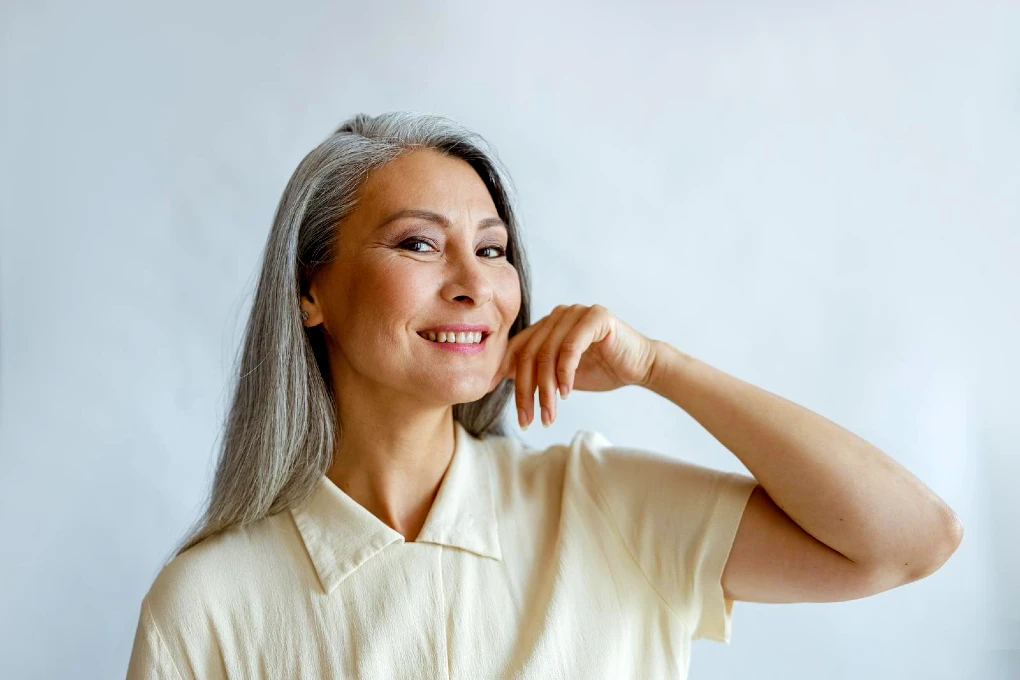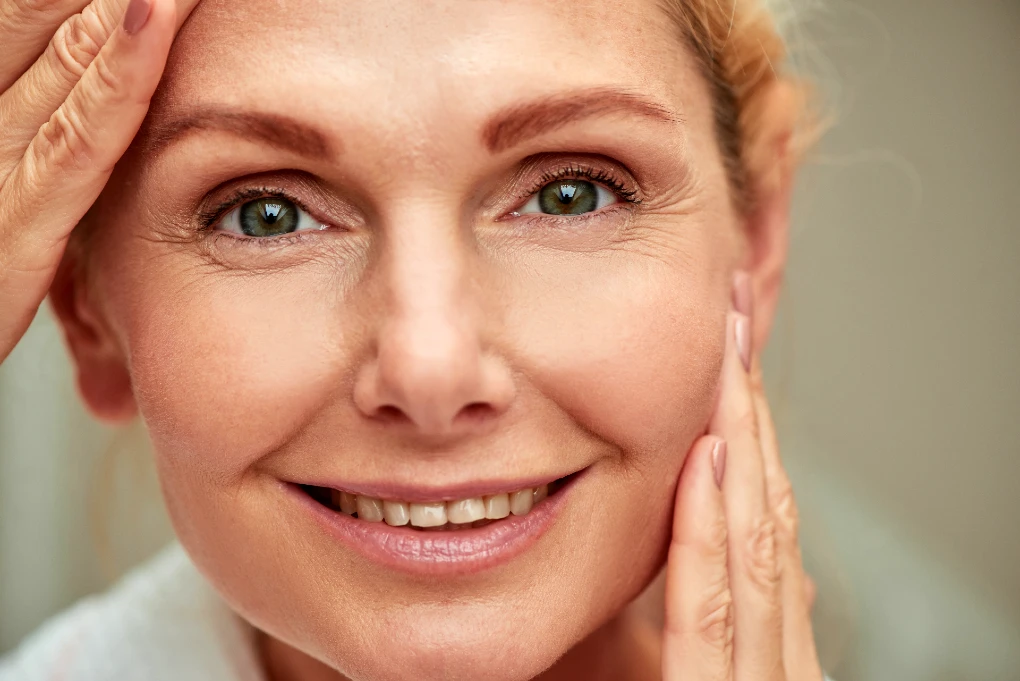What are the best ingredients to have radiant skin during menopause and perimenopause? Skincare during menopause and perimenopause is very similar to what you did before, but as you probably know, it becomes more demanding. In my experience, small changes in our skincare can deliver great results.

Skincare during menopause and perimenopause has to address the skin changes that the fluctuating hormones bring, especially the lower levels of estrogen in our bodies. As the estrogen levels go down, the changes in the skin become more pronounced. Decrease in estrogen levels can cause a range of conditions, including skin dryness, thinning, and wrinkles. By incorporating certain ingredients into your skincare routine, you can help restore radiance to your skin during this time. So here are the best ingredients to have radiant skin during menopause and perimenopause
Vitamin C
One of the best ingredients for radiant skin during menopause and perimenopause is Vitamin C. This powerful antioxidant helps brighten the skin, even out the skin tone, and reduces the appearance of dark spots and hyperpigmentation. Additionally, Vitamin C boosts collagen production, helping to keep the skin firm and smooth.
Vitamin C is also an anti-inflammatory, which can help reduce redness and irritation. Moreover, this ingredient can help protect the skin from environmental stressors such as UV radiation and pollution. To incorporate Vitamin C into your skincare routine, look for serums or moisturizers that contain at least 10% L-ascorbic acid, the most potent form of Vitamin C. There are a lot of new forms of vitamin C and they are more stable, but because they are new we don’t know yet if they are as effective as the products that have been around for a long time. Vitamin C oxidizes very fast. That is why you might want to keep it in the refrigerator and avoid dark or colored serums because you won’t be able to see if the vitamin C is still active. If the vitamin C turns brown, it has lost its power.

Niacinamide
Another powerful ingredient to consider is niacinamide. This form of Vitamin B3 helps reduce inflammation and can soothe redness and irritation. It also helps brighten the skin and reduces the appearance of dark spots and hyperpigmentation. It comes in many creams and it is also great for the skin in the body.
Glycolic Acid
This is a powerful ingredient in skincare during menopause and perimenopause. Glycolic acid is a type of alpha-hydroxy acid (AHA) that can help exfoliate the skin, remove dead skin cells and reveal brighter, smoother skin. This ingredient can also help reduce the appearance of fine lines and wrinkles by stimulating collagen production. Additionally, glycolic acid can minimize the appearance of hyperpigmentation and dark spots. Some people don’t tolerate it well, in that case lactic acid is a good substitute.
Retinol
This is the standard for anti-aging skin care. Retinol is a form of Vitamin A that can help improve skin texture and reduce the appearance of fine lines and wrinkles. Additionally, retinol can help increase cell turnover, leading to brighter, smoother skin. However, it’s important to use retinol sparingly, as it can cause irritation and sensitivity if overused. I use the medical form (prescription), Tretinoin, also known by its original brand name, Retin A. For Retin A you can get the prescription from your regular doctor and look for deals on GoodRx. It is cheaper to buy that way than on online pharmacies that give you the prescription and use a subscription model. You can also buy it internationally in India or Mexico. I use the Mexican made original brand.

Hyaluronic Acid
Hyaluronic acid is a powerful humectant that can help hydrate the skin and improve its overall texture. During menopause, the skin tends to become drier, so using a moisturizer that contains hyaluronic acid can help keep the skin plump and hydrated. It comes in a lot of products and it is a modestly priced ingredient.
Alpha Arbutin
Alpha arbutin is a natural skin brightener that can help reduce the appearance of dark spots and hyperpigmentation. It works by inhibiting the production of melanin, the pigment that gives our skin its color. Additionally, alpha arbutin has antioxidant properties, which can help protect the skin from environmental damage. I use the one from the brand The Ordinary.
Azelaic Acid
Azelaic acid is a multifunctional ingredient that can help reduce acne, hyperpigmentation, and signs of aging. It has anti-inflammatory properties that can help reduce redness and irritation, making it an excellent choice for sensitive skin.
Peptides
Peptides are short chains of amino acids that can help stimulate collagen production and improve skin elasticity. As we age, our skin loses collagen, which can lead to wrinkles and sagging. By using products that contain peptides, we can help keep our skin looking firm and youthful.
Vitamin E
Vitamin E is another powerful antioxidant that can help protect the skin from environmental damage. Additionally, vitamin E can help reduce inflammation and improve skin texture. It’s often used in moisturizers and serums to help hydrate the skin and improve its overall appearance. I use a serum that has vitamin C, E, Ferulic acid and hyaluronic acid from the brand Timeless Skincare.
What about your hormones in skincare?
Hormonal balance is very important for the skin. For this reason people on HRT or BHRT see improvement in their skin when they start the treatments. If you would like to improve your menopause or perimenopause symptoms with lifestyle, I recommend my program BLISS in Menopause where you will learn everything to improve your health, energy levels, mojo and skin. You can read more about it here.
In conclusion
Menopause and perimenopause and the plethora of changes that they may bring can be challenging, but incorporating these ingredients into your skincare routine can help restore radiance and vitality to your skin during menopause. Remember, happy girls are the prettiest, so don’t worry, be happy. This is another helpful article about skincare in menopause

